The Peugeot 205 GTI: favourite hot hatchback of the 1980s. That’s a discussion point rather than a statement of fact, as fans of Volkswagen’s Golf GTI and Renault’s 5 GT Turbo (the latter one of the cars in the 2021 Hagerty Bull Market list) will be quick to point out, but for many pundits around at the time (this writer included), it’s hard to deny top slot to the feisty and fabulous Peugeot.
Why? Because nothing else gets that magic mix of driver interaction, good looks, mechanical toughness and sheer fizz quite as perfectly right. You could argue that this is as true today as it was back in 1984, because no-one else has dared to make a hot hatchback quite so singularly involving as a 205 GTI since. At least, not an easily affordable one.

Today, the 205 GTI has come back up in the world, and how. Who would have thought, a decade or two ago, that the best examples would bust the £30,000 barrier, as an ultra-original example with minimal miles did at auction in 2017? It wasn’t a total fluke, because auction results well into the £20,000s have happened several times since. That said, one could be yours for a lot less than that even if the days of the £500 eBay project are over.
What you’d be buying is a neat three-door hot hatchback styled mostly in-house, with a sprinkling of Pininfarina fairy dust to finish the job. Anorak fact: it’s arguably the first modern-era car with a body-coloured front grille, and the combination of light weight, torquey engines and a generous tyre footprint guarantees a lively drive.
But there’s another key ingredient in the 205’s suspension design, the key to steering extraordinarily precise and responsive despite quite low gearing. It was the first car to popularise the long anti-roll bar drop link, a vertical arm with a balljoint on each end which linked the ends of the front anti-roll bar not to the suspension wishbone, as used to be normal, but directly to the body of the MacPherson strut. It sounds an arcane piece of techno-detail, but here lies much of the reason for that fantastically accurate and transparent steering. Nowadays nearly all new cars have a similar system.
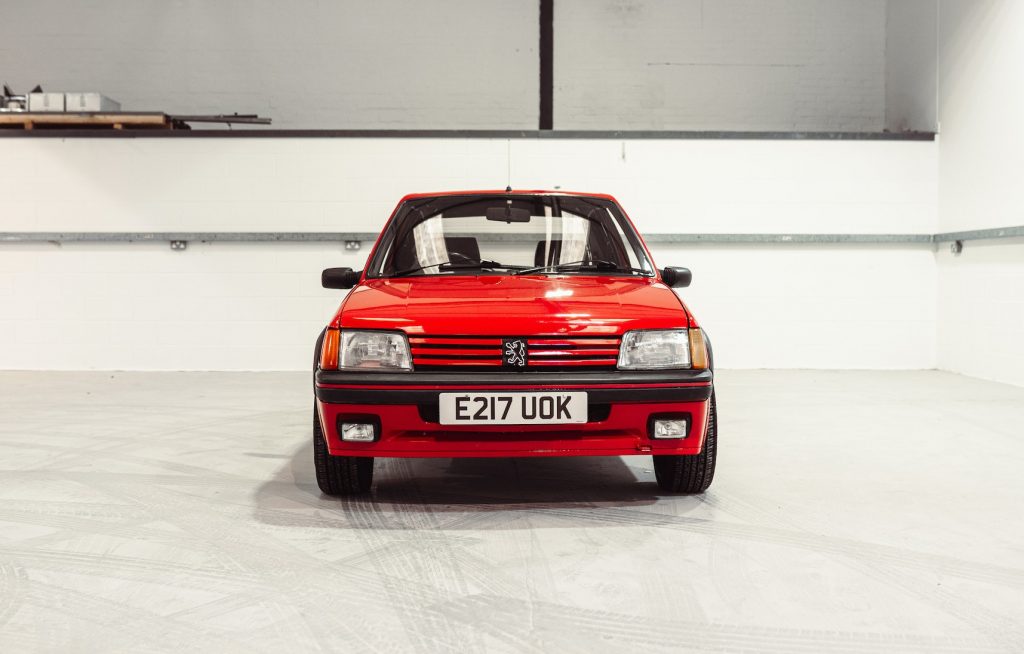
As launched in 1984, the 205 GTI offered 105bhp from its 1580cc, four-cylinder petrol engine. This was raised to 115bhp during 1986, at the end of which year a longer-stroke 1905cc alternative arrived. This new, 130bhp 205 GTI 1.9’s most obvious visual change from the 1.6 was its larger wheels – 15in instead of 14in, still wearing 185-section tyres but 55-profile instead of 60 – with fewer, larger holes. Behind those wheels were larger front hubs with a revised offset, tougher driveshafts and, at the back, disc brakes instead of drums. The other major mechanical change was longer-legged gearing, giving a fairly relaxed 20.9mph/1000rpm in fifth instead of a more frantic 18.8. Inside the 1.9, leather now covered the seats’ bolsters and the steering wheel’s leather rim, strangely, was thinner.
The so called ‘Phase 1.5’ cars arrived in late 1987, with a new, smoother-looking dashboard featuring slightly less versatile rotary controls (simultaneous heater fan and air recirculation were no longer possible), no more visible painted metal in the cabin, slightly more durable upholstery cloth for the 1.6 and a reshaped tailgate incorporating a slimmer, neater roof spoiler. Three years later, the officially-named Phase 2 cars got darker interior plastics, clear front indicators and revised inverted-L-pattern rear lights.
Catalytic converters became obligatory on new cars during 1992, which spelt the end of 1.6 production and caused the 1.9’s output to drop to 122bhp. Two years later it was all over for the 205 GTI, the last examples featuring revised door trims with fabric inserts plus carpets in green or grey instead of the usual red. These final cars emerged not from Peugeot’s Mulhouse factory but from the satellite operation in Spain. After a decade of brilliance, the Peugeot had barely dated. And it was winning tests against its peers right to the end.
What’s a 205 GTI like to drive?
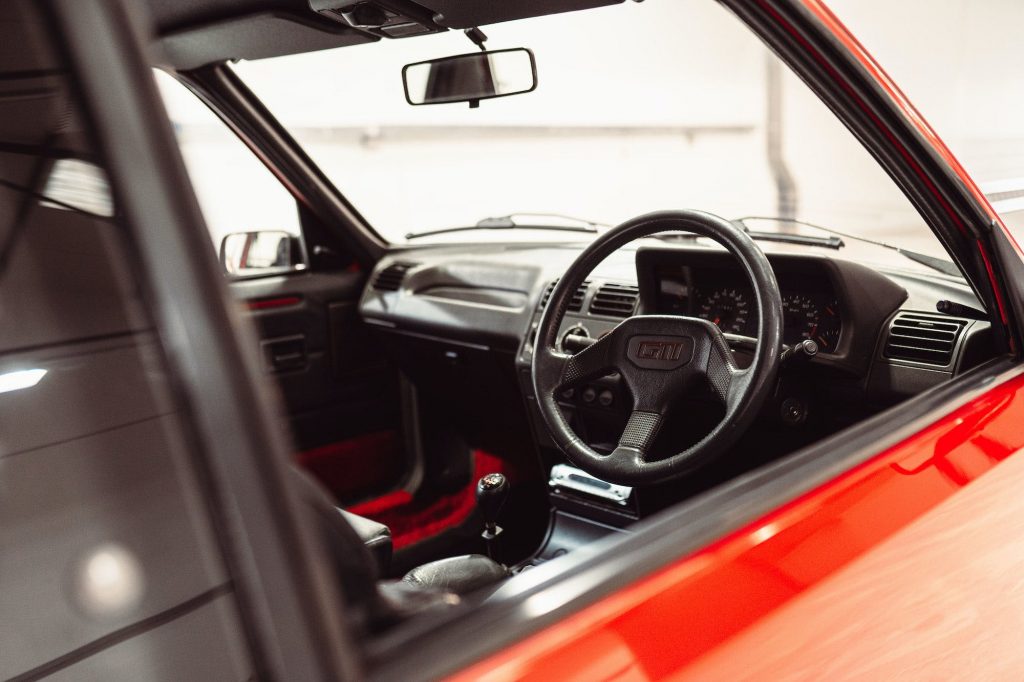
Scintillating, if it’s working as it should be. There’s that smooth engine with its whipcrack throttle response and deep, hollow, metallic exhaust note, a super-light, super-quick gearchange, that ultra-connected steering and a perfectly commanding driving position, all setting the scene for a day of devouring backroads.
The ride is surprisingly absorbent, except in any 105bhp cars still running on their original-spec dampers which could be tiresomely jiggly, and the brakes feel firm and confident especially in the all-disc 1.9. Big-distance cruising is entirely possible, if not as restful as in a newer car, and the last 1.9s could even be had with anti-lock brakes, albeit front-only.
Then there’s that fantastic throttle-steerability, a change in cornering attitude between power-on and power-off that manufacturers dare not emulate today without the security blanket of electronic intervention. There’s no such trickery in the 205, of course; it’s all down to you and your senses.
This is the point when we’re supposed to refer, almost reverentially given the folklore, to the GTI’s tendency to fling itself backwards through the hedge if you back off suddenly in a bend. But it just isn’t true, given two provisos. First, the driver needs to be able to feel what the 205 is telling him/her, which it will do with great clarity, and by instinct (quickly and easily honed) to unwind the steering a fraction when coming off the accelerator. Second, the 205 needs to be running on modern tyres of a good and trusted make, on which its tail will feel tied down in a way completely alien to the underserved reputation.
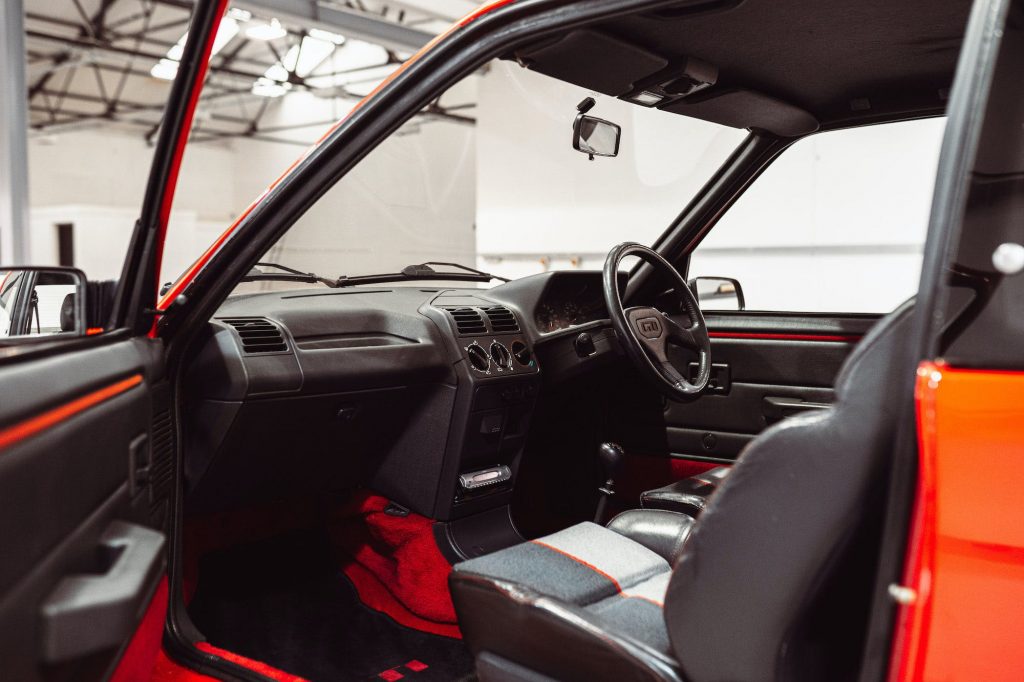
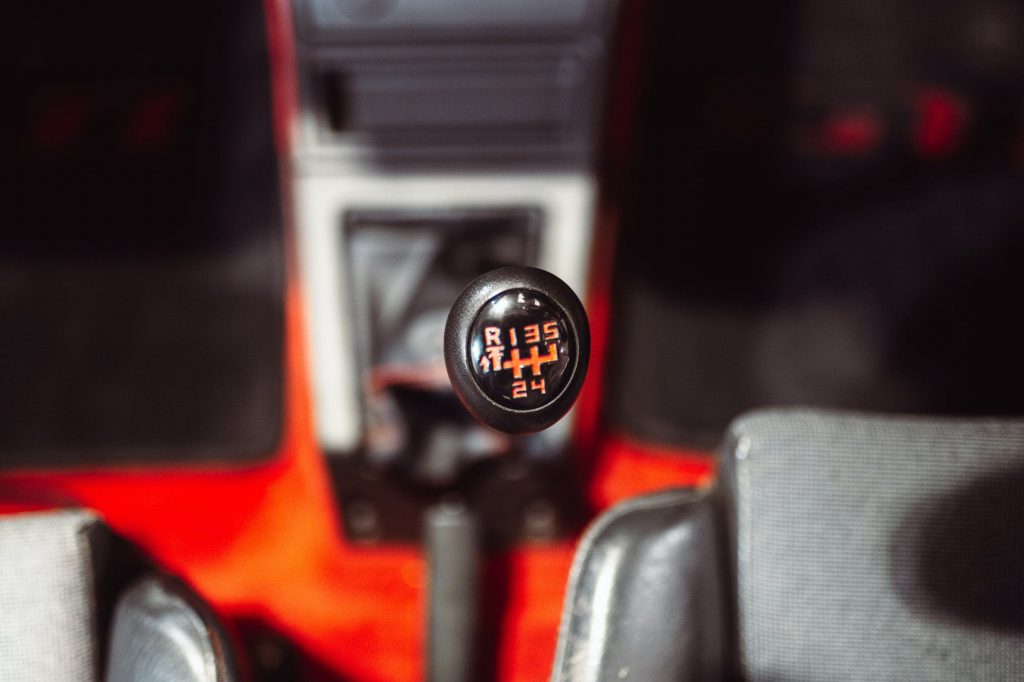
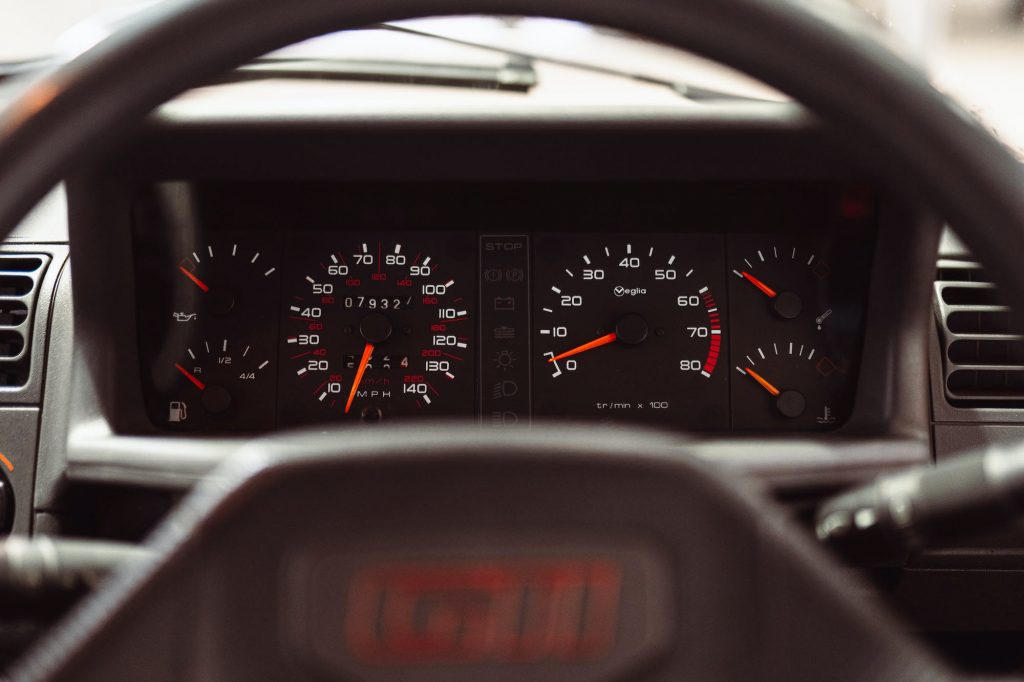
Some 205 GTIs can be annoyingly snatchy in stop-start traffic, caused by the fuel injection’s over-enthusiastic reinstatement of fuel as the revs drop below the end of the overrun fuel cut-off zone. The Bosch LE-jetronic injection system isn’t clever by modern standards, and its electronics are analogue except in the last, catalysed cars, but if it’s set up carefully the snatch can be minimised. Superchips is one company which used to change some components in the ECU to smooth the transition, to good effect.
Some later cars came with power steering and a rack correspondingly speeded-up from 3.7 turns lock-to-lock to 3.2. It’s a good system which retains proper weighting on the move, but it changes the steering feel from totally transparent to merely very good. Parking becomes easier, though.
And the 1.6-versus-1.9 debate? Some will tell you that a 1.6 is somehow ‘better balanced’, whatever that means. It certainly isn’t to do with the weight of the engines, which is very similar. It could mean that the 1.6’s character is softer-edged and less extreme, which is true; the steering, the throttle-on/throttle-off attitude change, the engine’s thrust are all gentler in a 1.6. But it’s the 1.9’s very sharpness and big-lunged, effortless eagerness that makes it so beguiling. And the remarkable reach of its long-legged first gear away from a standing start.
How much does a Peugeot 205 GTI cost?
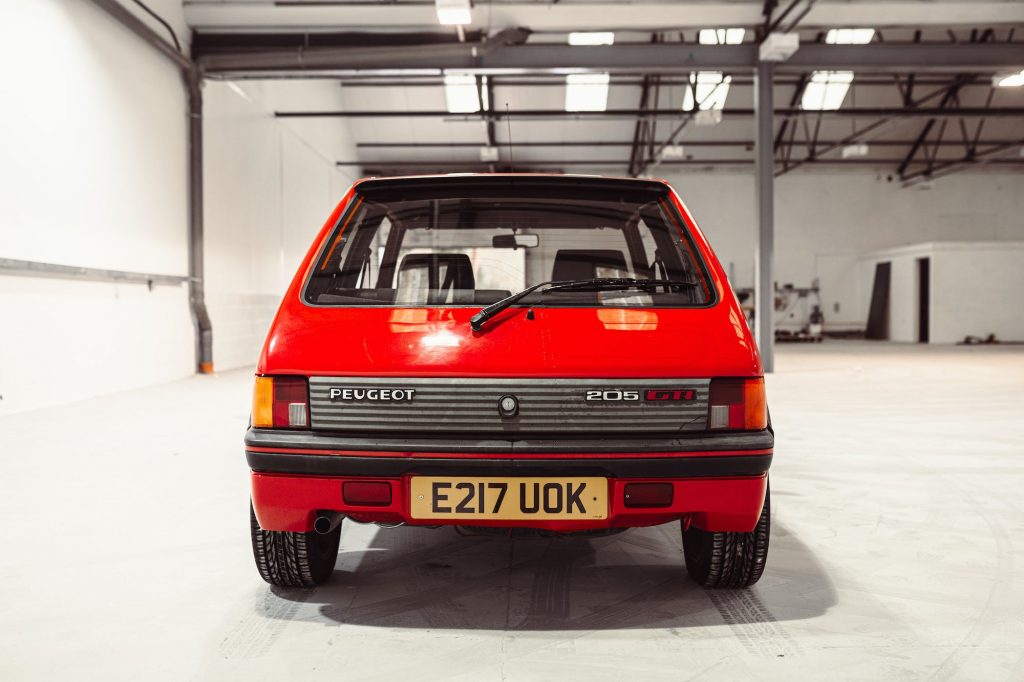
Last June, Hagerty highlighted the rising values of hot hatchbacks from the 80s and 90s. The ever-helpful Hagerty valuation tool – which you can browse by clicking here – tells us that a truly concours 205 GTI is still worth £27,000 or so, a merely beautiful one around £19,000, a very tidy regular driver will require over £12,000 and even a flawed but usable example is worth a good £7000. The very last cars are worth a little less, perhaps because they aren’t as lively thanks to the fitment of a catalytic converter, and no distinction is made between 1.6 and 1.9. In practice, though, 1.9s fetch slightly higher prices.
You might expect the very first cars –1.6s with 105bhp, a canvas-weave pattern on their cabin vinyl (rather than leathergrain), a thin and non-leather steering wheel, chunkier column stalks and different instrument graphics – to command a premium on account of the rarity. After all, when did you last see an A-, B- or C-registration 205 GTI? But, so far, they don’t.
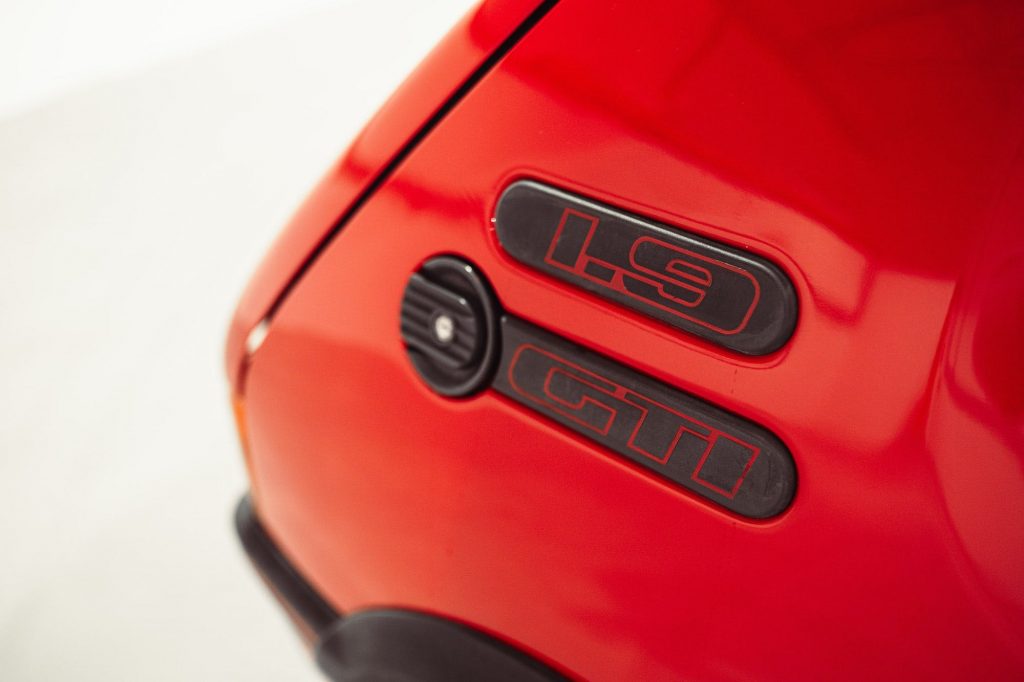
The 1990 UK-market limited-edition models, however – 1200 cars, 600 each in Sorrento Green and Miami Blue, evenly split between the engine sizes – are much prized and can be worth a little extra. They have full-leather seats in grey, the only GTIs to be so trimmed, and the carpets were similarly grey instead of racy red. Those paint colours later became part of the regular range. There was another (very) limited edition, too, in the form of the 1FM which commemorated a promotion with BBC Radio One and featured a monster-for-the-time sound system. These are truly the unicorn 205s.
Many 205 GTIs have been modified over the years, but the trend now is to return them to standard. As ever, standard cars tend to be worth more unless the modifications are particularly appealing and well-executed. Fitting the 16-valve Mi16 engine from a hot Peugeot 405 or a Citroën BX 16v has long been a popular project, for example, and can result in an extremely enjoyable 205 especially if the car remains standard-looking on the outside.
What goes wrong, and what should you look for when buying a Peugeot 205 GTI?
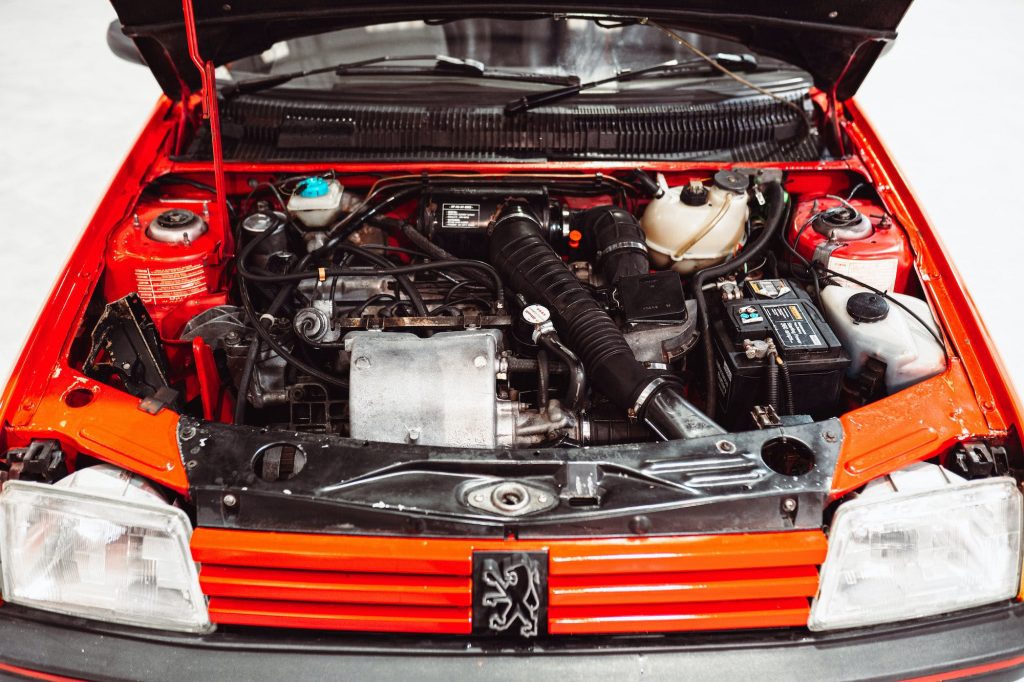
The exterior body panels are made from famously thin steel, so they tend to dent easily, but fortunately the underlying structure is rather more robust. The bodyshells were galvanised to a degree, which partly explains why they are more rust-resistant than some of their contemporaries. Completely rust-free 205s still come up for sale occasionally, but there are plenty of places where other examples are showing signs of decay.
Starting at the front, the panel behind the headlights, bumper and spoiler collects water at its junction with the chassis legs and inner wings, and crumbling metal is common there. Aftermarket repair panels exist for this and other trouble spots. Check the inner wings themselves where they join the inner wheelarches, and the bulkhead at the join with the chassis legs. Spilt brake fluid can eat away at the paint and seam sealer by the right-hand leg, eventually leading to a rusty hole into the footwell. Persistent water leaks can cause trouble at the bulkhead’s bottom seam, too, visible from under the car.
The front faces of the doors’ inner shells are partly double-skinned and can harbour rot, while the backs of the sills and the rear-wing section above them are a favourite trouble spot. Leaking rear quarter-window seals can be the cause of this. The body shell isn’t especially stiff, which can cause the joins between the roof and the rear side panel to crack just behind the doors’ top rear corners, and also the joins between the sill and the bottom of the centre pillar. The panels won’t actually part company but de-rusting and reinstatement of the seam sealer will be needed.
Other places to check are the pan under the rear seat, because damp road dirt collects between the underside of this panel and the fuel tank and rust can break through. Brake pipes pass through that dirt-attracting void and can rust away unseen, so it’s good to see a 205 that’s had a new set of pipes. The boot floor merits close inspection, and check that the rear bumper is firmly attached because the mounting panels are good mud traps.
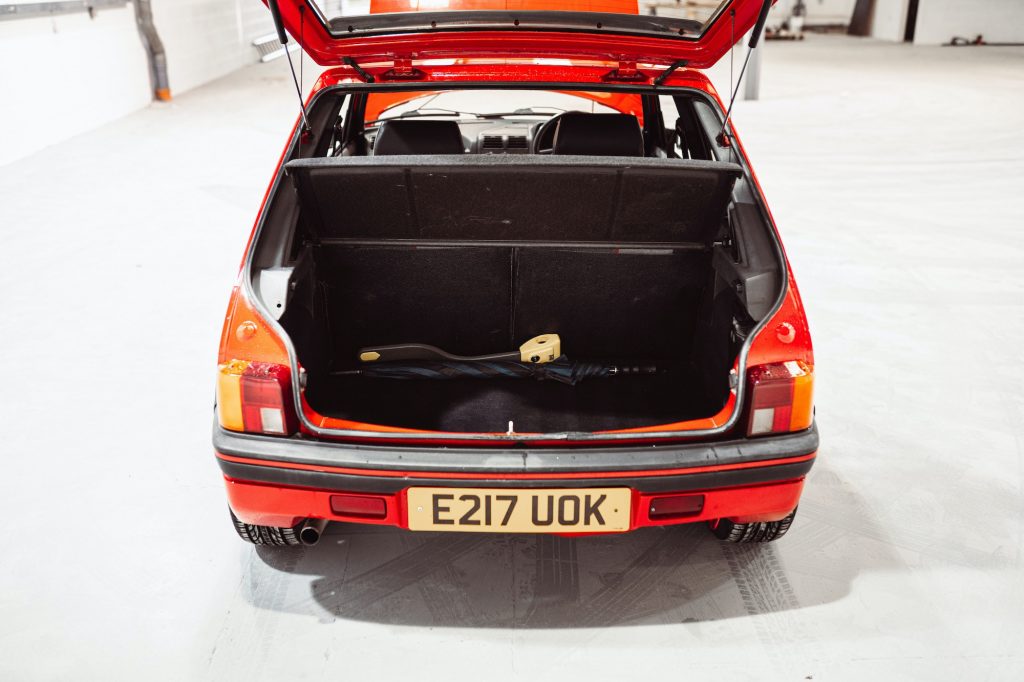
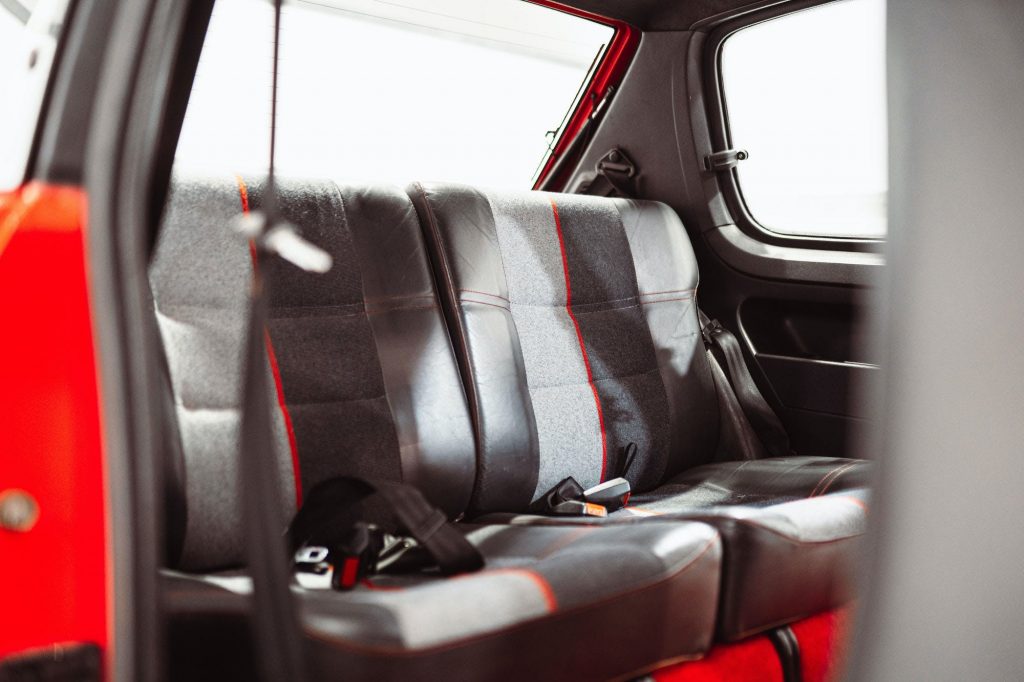
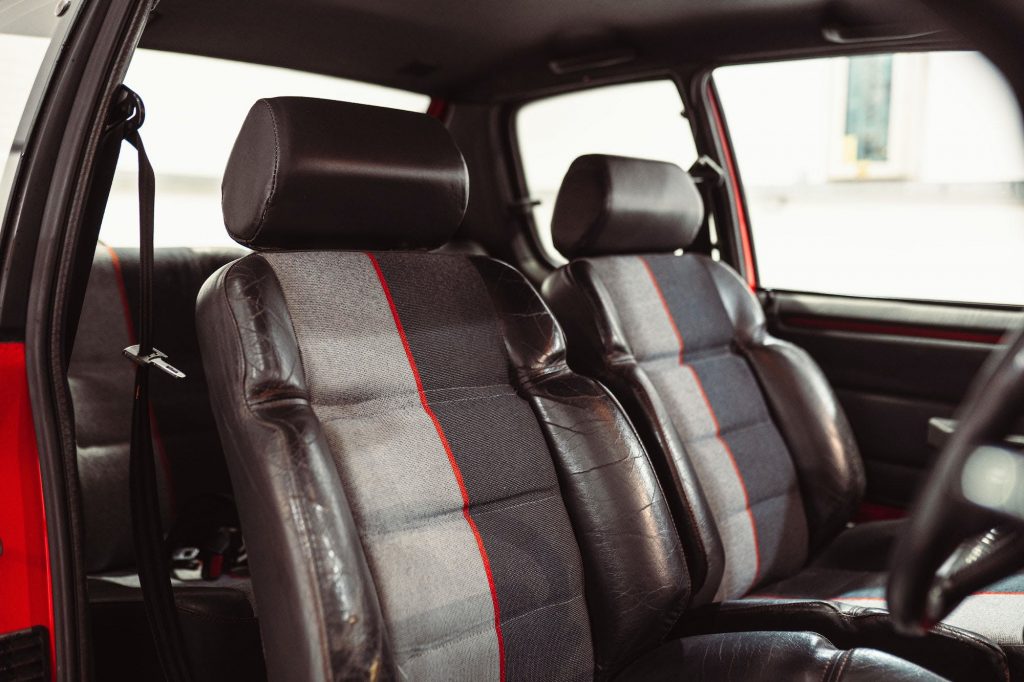
Many 205 GTIs have a factory-fitted glass sunroof, against which a springy, hollow rubber seal presses when it’s closed. When you pull on the opening handle, vacuum from an underbonnet vacuum tank sucks the air out of the seal so the pressure on the glass is released and sliding it back is possible. Check it all works.
There’s a lot of hard plastic trim both inside and outside a 205. Some will be getting brittle by now so check for cracks and looseness. Check also the integrity of the upholstery, but if the front seats’ outer bolsters have collapsed (a common failing) they can be re-made by a competent trim shop. Disintegrating gear-lever knobs used to be a worry, good secondhand replacements becoming eye-wateringly expensive owing to their rarity, but new ones are now available again, as even Peugeot now has a classic division that makes and sells spares to keep its old models soldiering on.
Most electrical faults are down to corroded connections, straightforward to fix once identified. Which leads us to the mechanical parts, where the news is mostly good. The all-aluminium XU engine should stay healthy well past 150,000 miles if well maintained, although puffs of blue exhaust smoke can signal the demise of the valve stem oil seals before then. The airflow meter eventually wears out, resulting in an inability to get the idle CO down to the correct 1-to-2%, but exchange reconditioned items are available.
A sloppy gearchange is most likely to be caused by a worn or disintegrating pivot bush in the linkage’s bell crank, easily replaced. Knocks or creaks in the front suspension most often point to worn or seized balljoints in those long droplinks, but the struts’ top mounts and the lower wishbones’ outer balljoints and inner bushes can also wear. Replacement bushes should be genuine Peugeot, provided you can find them.
At the back, the main trouble spot is worn needle-roller bearings in the trailing arms’ pivots. The rear wheels will show obvious negative camber – where the top of the wheel is leaning in toward the car – if they’re really bad, but you can check for play by trying to tug the top of the rear wheel in and out, ideally with the tail jacked up and the wheels hanging free. Specialists such as im or AB Autos can supply a complete reconditioned exchange rear axle assembly with new bearings and new trailing-arm shafts if required, all assembled onto the suspension cross-beam.
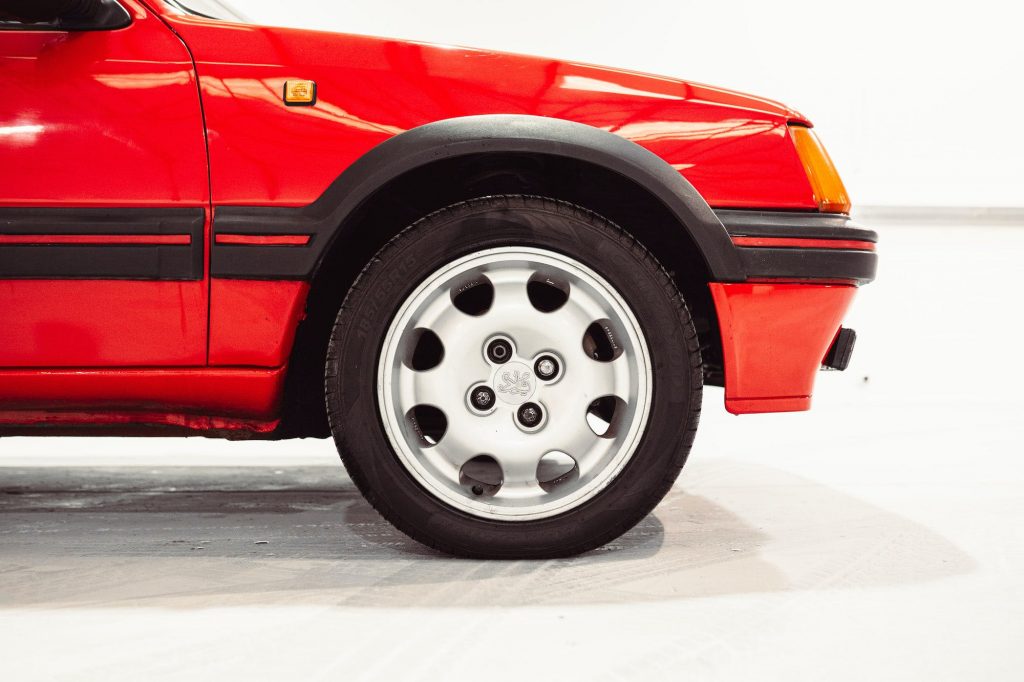
Peugeot paid great attention to getting the 205 GTI’s driving dynamics right, and the cars work best at the standard ride height and running on Peugeot’s own struts and dampers. Many have been lowered and otherwise modified, so beware. Talking of modifcations, some cars have lost the original air-filter box and trunking in favour of an ‘induction kit’. Again, original is best – it’s quieter, and the trunking delivers a lightly force-fed stream of cool air.
Early 1.9s have Speedline wheels, later ones have similar-looking but heavier items made by SMR. It’s good to have four matching ones – and be aware that some owners of 1.6s have fitted 1.9 wheels to their cars. Make sure that the car you’re buying really is what it looks like. For example, one way of identifying a 1.9 engine is by its spacer between the block and the sump, which creates space for the longer-stroke crankshaft.
Most mechanical parts are still available, albeit aftermarket in some cases, but many trim parts have long been what Peugeot describes on its parts pages as ‘NFP’ – no further production. This is starting to change as Peugeot ramps up its heritage arm, l’Aventure Peugeot. The company has even started an in-house restoration service which will offer restored Peugeots for sale, and the first car to undergo this treatment is, yes, a 205 GTI 1.9. You can see the range of new parts now offered – including the recently-elusive gear-lever knob – by visiting its website here.
So, which is the right 205 GTI for you?
Frankly, any version should hit the spot and bring back those 1980s hot-hatch thrills, and both engine sizes have their devotees. The 1.9 gives the more intense 205 GTI experience, but the 1.6 is calmer in its responses, has a revvier engine and remains a fine and frisky machine. Whether to favour an early car or a late one is purely down to taste; condition is much more important. And, of course, there’s also the CTI convertible to throw into the mix. Whichever you opt for, you’ll have fun.
Read more
Future classic: Ford Focus RS (Mk1)
Your Classics: Lee Sunderland, 1994 Renault Clio Williams
Quiz: Can you identify 9 wheels from 1980s hot hatch heroes?


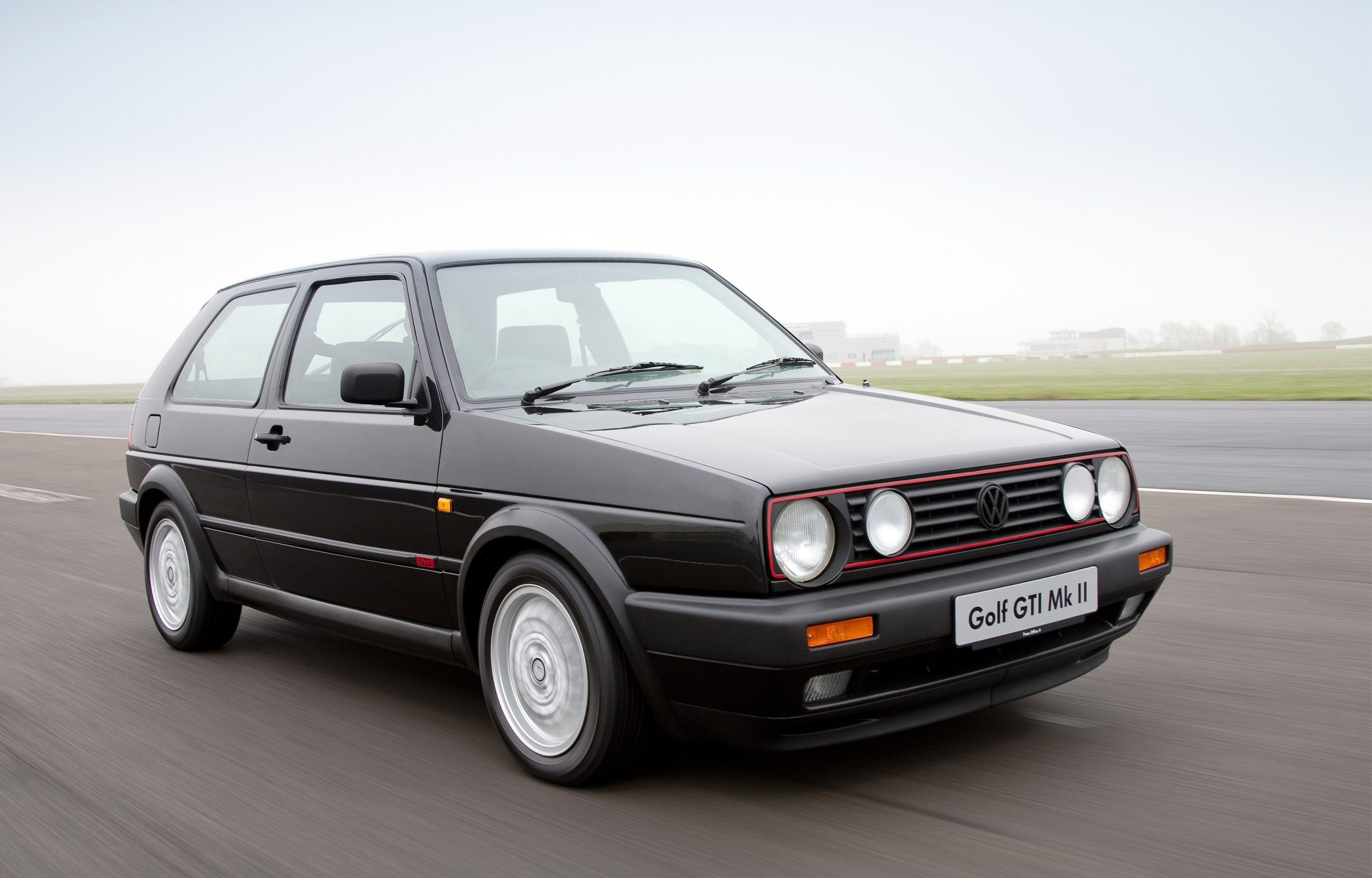
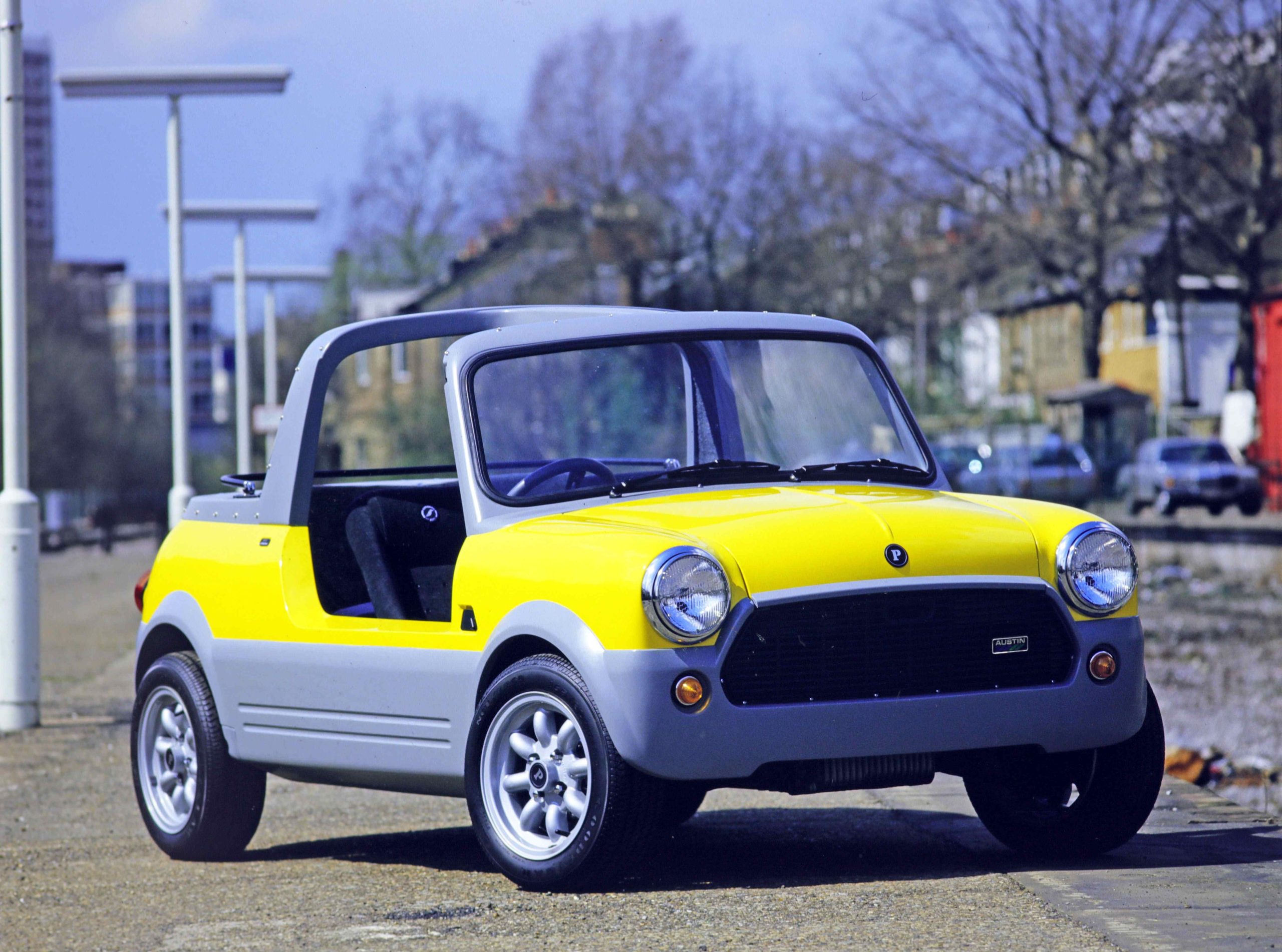






Note that valve stem seals can be replaced without taking the head off, which makes for a pretty inexpensive job. This was done for us some years ago by an old-school Citroen garage in Cookham.